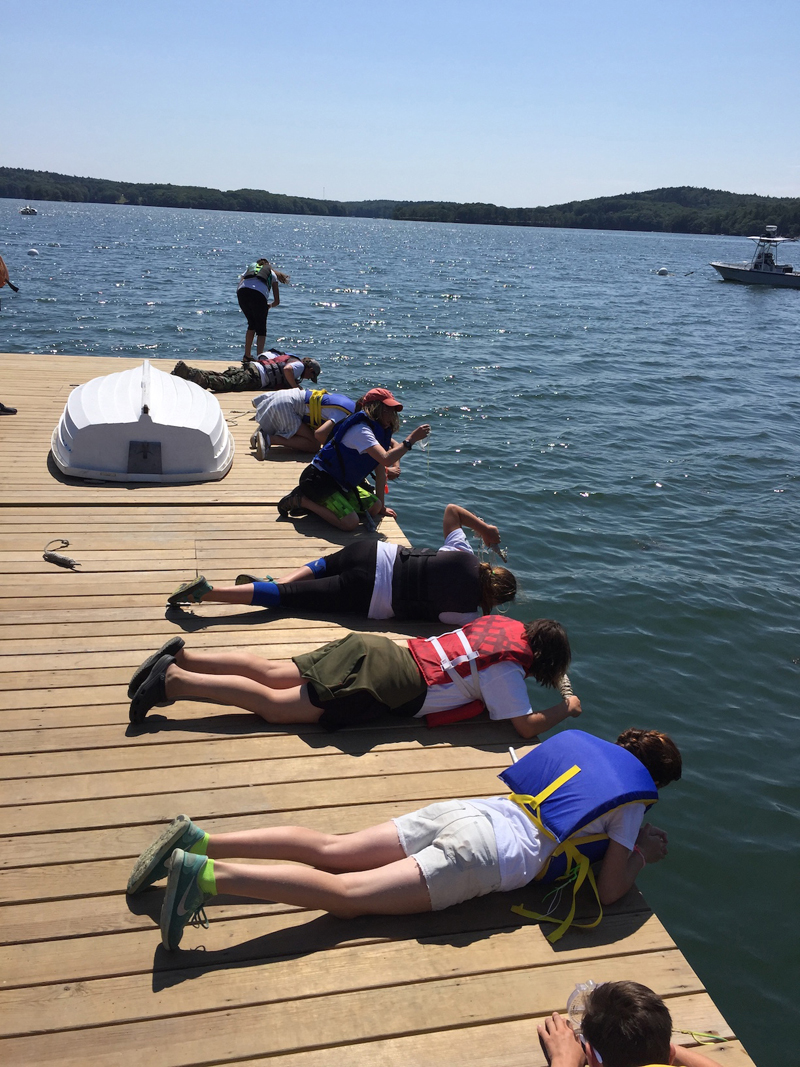
Boothbay Sea and Science Center campers take temperature, salinity and turbidity measurements with thermometers, hydrometers, and Secchi disks off the Darling Marine Center dock.
Students at the Boothbay Sea and Science Center capped off their summer program with a day-long visit to the University of Maine’s Darling Marine Center. Under the leadership of Lili Pugh, the marine center’s K-12 education coordinator, nearly 30 Boothbay campers ages 5-13 learned about shellfish aquaculture.
“To understand aquaculture, one must know the science,” said Pugh. “Understanding water quality, plankton abundance, the life cycle of shellfish, and the estuarine habitat are all very important no matter whether you are an oyster grower, a researcher, or enthusiastic consumer of the half-shell delicacies.”
Boothbay Sea and Science Center campers learned how to assess water quality by measuring temperature, salinity, and turbidity from the Darling Marine Center dock in Lowes Cove. They also collected plankton and toured the shellfish hatchery. While hiking the marine center’s nature trails, campers learned about the land-sea connections that shape the Damariscotta River watershed.
This program was supported by the Edward A. Myers Marine Conservation Fund and the University of Maine. Conservation fund awards to the Darling Marine Center and other area organizations have enabled hundreds of students to learn more about the coastal ocean, aquaculture, and marine science in the last decade. All proceeds from the Pemaquid Oyster Festival – to be held this year on Sept. 24 in Damariscotta will go to benefit the conservation fund.
Located in Walpole, the University of Maine’s Darling Marine Center is an active center of marine research, education, and community engagement. Researchers there study coastal and marine ecosystems, as well as the human communities that are a part of them, in Maine and around the world. For more information, go to dmc.umaine.edu.






